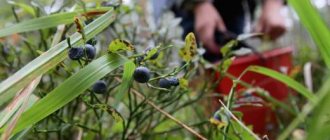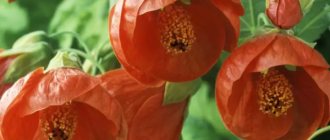These bright and elegant representatives of the cyanosis family, in addition to amazing decorative characteristics, also have many other advantages. Phlox are unpretentious and can grow in low light conditions and on a wide variety of soils. They last a very long time in a bouquet, and therefore are great for room decor.
The genus of this plant includes more than seventy species, of which almost thirty are wild, and the rest are cultivated. There are up to four hundred varieties and hybrids of this flower alone. The vast majority of them are perennial crops. The most common ground cover phloxes in our country are creeping ones. Their flowers bloom in mid-May. Among this species, the most common is creeping awl-shaped phlox. It got its name thanks to its small oblong leaves, which look like an awl.
Description
The evergreen creeping awl-shaped phlox, covering the ground with a dense mat, reaches a maximum of twenty centimeters in height. The stems of this plant are densely covered with short, small, hard leaves. On each stem there are one or two flowers, two and a half centimeters in diameter. The color can be very different: pink, red, white, purple (phlox Douglas), lilac, etc. This crop blooms very profusely for the first time in mid-May and until the end of June, the second time less generously - from August to September.
Creeping Phlox is very winter-hardy. It is considered a real decoration for retaining walls and rock gardens. Many gardeners love creeping awl-shaped phlox because of its ability to remain emerald green from spring until late autumn.
Although its flowers themselves are quite small, their inflorescences look so rich that they practically hide the leaves and stems. In Europe, creeping awl-shaped phlox first appeared in England. He immediately became very popular. They began to grow it even in English gardens on the estates of the nobility.
Popular types and varieties
Low-growing perennial phloxes include several subspecies:
- Douglas;
- subulate;
- dwarf;
- northern;
- spread out;
- snow;
- multifloral.
All low perennials grow on loose and well-fertilized, drained soils. Excess moisture causes a negative impact. They do not need mineral fertilizers, but they also feel good with them. They have a very pleasant light aroma. Low perennial phloxes have a color typical for this species. Height ranges from 7 to 40 cm.
Dwarf phlox loves dry soil. Refers to creeping species. Not often used by gardeners due to high growing requirements. The flowers usually come in different shades of yellow, white and pink. Often forms inflorescences. These mini phloxes are a very winter-hardy species. In addition, they have high resistance to various diseases.
Phlox perennial groundcover, or Douglas, is sometimes called double carnation, because before flowering its greenery remembers a low cap of moss. The flowers reach a height of 6-7 cm. Flowering begins at the very end of spring - beginning of summer. The stems of the plant are green all year round, which is a big plus. They grow in flat and dry areas, mostly sunny. Ground cover phlox develops well thanks to mineral fertilizers. Its seedling is inexpensive.
Varieties of creeping subulate phlox
Snow-white, pink, dark red, lilac, purple-blue - these flowers are incredibly beautiful in the garden. It is difficult to list all the shades that awl-shaped phlox has. Even a novice gardener can plant and care for this flower. Phlox awl-shaped belongs to the ground cover. Almost all varieties of this plant are used to decorate rockeries. Many types of perennial creeping phlox are common in our gardens. They begin to bloom at the end of May and look great in the garden. Both the lovely phlox Douglas and the purple-blue Rugelli are very popular among domestic gardeners. The main characteristic that unites all creeping species of this flower is a low stem and dense inflorescences.
Very interesting are varieties such as Candy Stripes, which produces white flowers with a pink stripe in the center, lilac Tellaria, which looks like an asterisk, Mayshnee, and the rapidly growing Thumbelina.
The most popular ground cover phlox
Phlox subulate
It needs a sunny place - in the shade the plant will survive, but there will not be vigorous flowering. The soil should be loose, poor (overfed phloxes actively increase green mass, but bloom sparingly) and without stagnant water. Watering - as necessary, fertilizing - before flowering and after, when rapid growth of new shoots occurs. Phlox awl-shaped is practically not affected by diseases and pests. The problem can be wet winters, leading to damping off, and spring burning, when moisture is already evaporating from the surface of the leaves, and unthawed soil does not allow the roots to replenish these losses. Phlox subulate has a significant number of garden forms and varieties, differing in height (from 10 to 20 cm), color, corolla shape, flower size, as well as growth rate and turf density. There are variegated varieties and varieties with a strong aroma.
Atropurpurea – pink-crimson, bright, star-shaped flower, very stable and unpretentious. Height 15 cm. This is one of the oldest garden forms.
Purple Beauty – lilac-violet, star-shaped flower. The bush is quite compact, up to 12 cm high. Flowering is abundant.
Candy Stripes – white with a bright pink stripe in the middle of the petal, loose turf, up to 15 cm high, grows at an average speed.
GF Wilson - light lilac blue. Height up to 20 cm. Grows quickly.
Sprite – dark crimson, star-shaped flower. Medium density turf.
Maischnee – pure white, dense, hard turf, 15 cm high.
Phlox Douglas
It differs from phlox subulate in its smaller height (10–12 cm), lower growth rate, and smaller flowers and leaves. It has a large number of varieties, including hybrids with the participation of phlox subulate:
Crackerjack – purple-crimson, star-shaped flower, height 10 cm.
Tycoon – dark purple, height 10 cm.
Zigeuner Blut – bright crimson, flaming, star-shaped flower.
Growing conditions are the same as for phlox subulate.
Phlox forked
Forms evergreen turf 15–20 cm high. The leaves are narrow, bluish, the stems are pubescent. The flower is up to 2.5 cm in diameter, very elegant, the corolla petals are deeply dissected into two lobes. A flowering bush gives the impression of butterflies fluttering above the ground.
This species is more demanding on soil fertility than subulate and Douglas phlox. Regular rejuvenation by cuttings is recommended - once every three to four years.
Phlox subulate: planting
The root system of this plant lies shallow. When preparing the soil before planting, you need to thoroughly clear the area of weeds. The fact is that they can grow through the turf and ruin the appearance of the flower garden. It is enough to place the planting material at a distance of twenty-five centimeters from each other, and within a year a continuous carpet will be formed. To speed up the growth process, the phlox stems should be laid out in the right direction and secured well.
Planting holes need to be dug at a depth of twenty to thirty centimeters, carefully fertilized with compost or humus mixed with ash and superphosphate fertilizers.
Nettleton Variation
This variety is good not only for its rich pink flowers, but also for its beautiful, “mint”-colored foliage. The bushes will decorate the border, alpine hill or flower garden even after flowering has ended.
| Petal color | Bush height (cm) | Bush diameter (cm) | Flowering time |
| Lavender | 5-10 | 30-45 | May June |
Soil requirements
All creeping phloxes thrive on loose, dry soils. It's surprising, but in fertile soils they produce more greenery than inflorescences. The fact is that in the wild they always grow on “poor” land. In regions with acidic soil, phlox will lack macronutrients, so the soil must be limed before planting. Most often, dolomite flour is used for this. Depending on the type of land, the amount of limestone can vary from 230 to 440 grams per square meter. On heavy soil, sand must be added to the holes immediately before planting.
Red Wings
The plant's dark green, needle-shaped foliage forms a dense, creeping covering, like a thick carpet. At the end of spring, it is almost entirely covered (so that the leaves are not visible) with bright pink flowers with a dark red center. Phlox Red Wings is suitable for loose, but not too fertile, dry soil in an elevated place where water will not accumulate. Light-loving, drought-resistant and winter-hardy, so shelter for the winter is not required. Curtains will look very beautiful both in groups and in single plantings on rocky flower beds or slopes.
| Petal color | Bush height (cm) | Bush diameter (cm) | Flowering time |
| Raspberry pink with burgundy center | 10-15 | 30-60 | May June |
Phlox care
It comes down to weeding, watering and fertilizing three times a day. With the right choice of planting site, suitable soil and proper care, creeping subulate phlox retains its beauty for about six years. And although this plant is frost-resistant, its leaves become damp in warm winters. As a result, phlox may lose its decorative effect, but with proper care it can recover. Humus added to the soil promotes rapid plant growth and abundant flowering. This plant loves light and fertilizer. However, it should be remembered that it should not be overfed. Otherwise, the power of the phlox will “go into the leaves”, and it will have beautiful and powerful greenery, but you may not get flowers. Watering should be rare and not very abundant.
Phloxes that have reached five years of age must be rejuvenated, since their stems gradually begin to “wooden” and their foliage begins to die off. In addition, adult plants are more susceptible to various diseases, and the flowers on a bush that has been growing in one place for more than five years become smaller, and the bush itself seems weakened. The crop often requires fertilizing with wood ash, which contains all the necessary microelements with the exception of nitrogen.
Briefly about culture
Phlox holds the record for longest flowering time. They are also one of the few flowers that overwinter in the garden without the need for shelter before frost.
In total there are about 600 species of these flowers, of which only one is annual.
They are planted in the garden by cuttings or seeds. Phlox bloom beautifully and luxuriantly, quite profusely, but with proper care. There are absolutely different colors: white with pinkish and red hues, blue, purple. They perfectly complement flower arrangements and delight the eye with their blooms in the flowerbed.
Phloxes
Important! The pharmacological properties of this flower have not yet been fully studied. Of all the variety of species, only Siberian phlox has healing properties. Medicinal decoctions and tinctures against sleep disorders, throat diseases and colds are often prepared from its petals.
Phlox creeping: reproduction
Most breeders believe that the fabulously beautiful, bright, low bushes of this plant are the most unpretentious and spectacular crops used to decorate gardens. The awl-shaped phlox reproduces both vegetatively and by seeds. The easiest and most common way is to divide the bush. Transplantation is carried out in the spring. The distance between bushes should be a maximum of thirty centimeters. If desired, the plant can also be propagated at home by stem cuttings, which are cut even before the buds awaken. They are planted in the ground in early spring. The cuttings take root quite quickly, and by the fall they become full-fledged plants. Propagation by seeds is practiced very little.
Main diseases and pests and measures to combat them
Phlox can be susceptible to viral, fungal and mycoplasma diseases. Even properly planted plants can get sick.
The most common disease is variegation. This virus changes the color of the flower and disrupts the coloring pigment. At the same time, it does not bloom so luxuriantly and has a sickly appearance. The carriers are insects and nematodes.
The following diseases also occur:
- rattling (leaf dying);
- leaf curl;
- ring spot;
- necrotic spotting.
Of the mycoplasma diseases, the most common is jaundice.
Perennials are also susceptible to fungal diseases, powdery mildew and septoria. For preventative purposes, it is worth treating the tools used to work with plants.
Important! Don't forget to disinfect the soil.
Among the pests, the appearance of phlox is spoiled by snails, slugs, and various types of caterpillars. They eat leaves and stems and are especially dangerous during the initial growth period.
Fungicides should be used to treat diseases, and insecticides should be used to eliminate insects.
Perennial phloxes are beautiful and unpretentious flowers that do not require special care. The main thing is to provide them with the proper conditions, and they will decorate the garden for many years.
Irreplaceable ground cover plants help designers create the unique appearance of a garden or park. A striking representative of this group is the perennial creeping phlox.
The flowering carpet that the bushes form is completely strewn with bright lilac, pink, purple and other shades of inflorescences. An elegant cover forms in early spring; it can be seen in rock gardens and lawns, flower beds and hanging flowerpots.
Phloxes are so unpretentious that beginning gardeners can easily master their cultivation. Provide them with light and an area without stagnant moisture - then they will cope on their own.
What else do these low flowering bushes need for unfading growth? Which variety of phlox to choose and how to propagate perennial ground cover flowers.
Features of cultivation
In the northern regions, where plants need to be covered for the winter, it is better to use spruce branches for phlox, which will not acidify the soil.
Dry leaves are not suitable for this. In the spring, in order to help the phlox awaken faster, you can water it with a humate solution. This accelerates both its growth and the development of the root system.
The best predecessors for awl-shaped phlox are calendula, lawn grass, tagetes and other crops that also do not tolerate excess moisture. You cannot plant this plant, for example, after strawberries. Like other evergreen crops, it is preferable to plant awl-shaped phlox in places where there is a lot of snow in winter.
Crimson Beauty
The needle-like greenery that forms the lush turf of the Crimson Beauty phlox is decorative at any time of the year - even in winter it does not lose its bright, juicy color. The flowers are pink in color with burgundy “strokes” closer to the center of the corolla. Under bright sun on ordinary, unenriched soil, it grows very well. At the end of spring, the lush evergreen carpet is covered with pink flowers in the shade of ripe raspberries. Ideal for rock gardens, rocky flower beds, terraces.
| Petal color | Bush height (cm) | Bush diameter (cm) | Flowering time |
| Raspberry pink with purple-lilac center | 10-15 | 30-45 | May June |
Pests
Subulate phloxes most often suffer from powdery mildew and various caterpillars, which quickly damage the stems of the plant. The lesion can be seen by curled brownish leaves. Such areas must be removed immediately.
It is not recommended to plant phlox in such places for three years. This plant can get sick from poor ventilation, as well as from a lack of fertilizer. Phlox should not be planted very close to each other, so as not to infect neighboring bushes.
Ground cover phlox in garden design
The use of creeping phlox in the garden is multifaceted. They are good in rock gardens and sunny rock gardens, on gentle slopes and retaining walls, along paths and on the lawn. Creeping phloxes are not aggressive and combine well with other low perennials and bulbous plants of different flowering periods, effectively emphasizing the beauty of dwarf conifers.
Emerald Cushn Blue
Small (about 1.5 cm) purple phlox flowers of this variety bloom on an emerald green cushion of leaves. The size of an adult Emerald Cushn Blue bush is approximately 15x60 cm.
This variety will grow in any type of soil, but only grows truly vigorously in well-drained, sandy soils and in good light.
| Petal color | Bush height (cm) | Bush diameter (cm) | Flowering time |
| Bluish-purple | 10-15 | Up to 60 | May-June, August-September |
Amazing Grace
Bushes of the Emazing Grace variety (“Amazing Grace” - in honor of the famous English church hymn) are slightly smaller in size than other phlox of this species, but they are not inferior in beauty to them. The flowers of this perennial have a characteristic color: white petals with a crimson ring around the center.
| Petal color | Bush height (cm) | Bush diameter (cm) | Flowering time |
| White with a crimson ring at the base | 5-15 | 30-45 | May-June, August-September |
Fertilizing and feeding phlox
Annual varieties need 4 feedings per season, perennial varieties - 5 (the last one will fall during the period of seed ripening).
Be sure to feed the phlox several times a season.
Approximate fertilizer application scheme:
- Late spring: 25 g of liquid manure per 10 liters of water.
- The beginning of June. The same thing, but with the addition of superphosphate.
- Early July. Liquid manure without additives.
- End of July. Fertilizer with potassium and phosphorus salt. Application of potassium-phosphorus fertilizer. It's better to do it in the evening.
You can use ash to fertilize phlox. Take 350 g, pour 2 liters of water over them, boil for 10 minutes. Cool, strain and add a bucket of water. Use for both root and foliar feeding.
Advice. After winter, water the phlox with humus. This will speed up their growth and root development.











